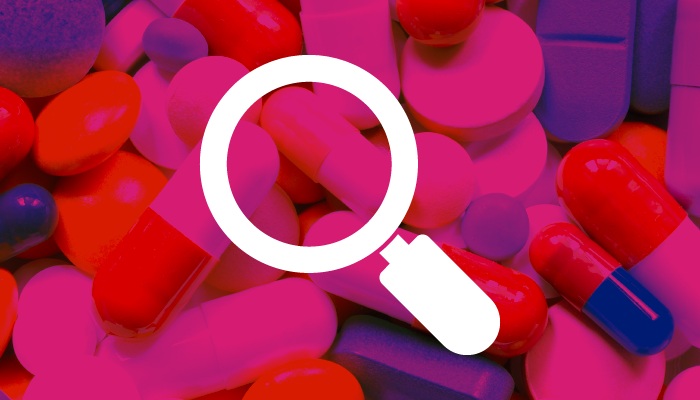
Original image sourced from: Adobestock.com
Nitrosamines were first linked to cancer risk in the 1950s, and many have since been associated with genotoxic and tumorigenic activities. They have been identified in products ranging from processed foods to tobacco, but it wasn’t until 2018 that pharmaceutical regulators discovered nitrosamines in common drugs, including ranitidine, nizatidine, and metformin. This resulted in widespread recalls and increased scrutiny by regulators – including the FDA – that are now mandating companies to adopt procedures to evaluate, measure, and mitigate nitrosamines in their products.
The detection and mitigation of nitrosamines present a multitude of challenges because these chemical compounds usually go undetected by typical impurity testing methods. Adding to the issue is the fact that nitrosamines can form at every stage of drug production, arising from a chemical reaction between a nitrosating agent – such as nitrous acid – and a secondary or tertiary amine. The risk is further impacted by several variables, including the manufacturing process, chemical structure of the API, excipients, solvents, and water used in drug production, as well as the final packaging and storage conditions. While both thorough qualification programs for new ingredients and reducing nitrosating agents in formulations can help to curtail nitrosamine formation, they don’t address all the variables, making these approaches largely insufficient in isolation.
One of the most common nitrosating agents in drug products is nitrites, which can originate from ingredients, packaging material, solvents, and even the air. The use of nitrite scavengers as functional excipients in drug formulations, therefore, could be one way of inhibiting the formation of nitrosamines. Nitrite scavengers in the form of antioxidants work by quenching reactive nitrites and blocking the nitrosation reaction. This approach has been applied in the food and beverage industry through the addition of ascorbic acid or alpha-tocopherol, with similar results now recently seen in pharmaceutical products (1).

There are many known nitrite scavengers, but not all are suitable for use in pharmaceutical formulations. Many have unpredictable properties relating to their activity, varying performance based on the environment, or can interact with other excipients in a formulation. In fact, only a few are listed on the FDA’s inactive ingredient database (2), with ascorbic acid and alpha-tocopherol specifically mentioned by the US regulator as possible strategies to mitigate nitrosamine formation (3, 4). This is supported by recent literature, which concluded that these vitamins are suitable inhibitors of nitrosamine in oral solid dosage forms. Other studies have also shown their efficacy (4), with no significant effects on the permeation of certain Class III drugs, suggesting they potentially have minimal impact on the bioequivalence of reformulated products (5, 6). Additionally, in vitro work has showcased the ability of ascorbic acid to decrease the amount of nitrite in a placebo tablet produced by either direct compression or wet granulation, with its effects increasing with higher concentrations – up to one percent (7). This study also investigated ascorbic acid in a standard tablet formulation with a model API, subjecting a control and a formulation containing one percent ascorbic acid to two weeks of stress testing at high temperature and humidity. It was found that ascorbic acid significantly reduced nitrosamine levels in the tablet over this time, which was replicated in two other drug models with different formulations and characteristics (7).
Key considerations
Incorporating low levels of ascorbic acid – as low as 0.25 percent in my experience – could significantly reduce the risk of nitrosamine formation in drug formulations containing vulnerable APIs and residual nitrites. The quality, grade, and purity of any added ingredients should be considered carefully to ensure optimal efficacy and safety of the final formula. The manufacturing method is also a crucial factor to consider because it will impact nitrosamine formation and the ability of ascorbic acid to scavenge nitrites, while the purity of the vitamin directly affects the quality of the final formulation. Finally, other impurities can lead to undesirable reactions and negatively affect overall stability. Manufacturers must also remember that discoloration can happen when ascorbic acid is included in a formulation. With these considerations in mind, it is vital to have a good understanding of how variables such as light, humidity, and pH can impact the final drug product.
While the acceptable limits of nitrosamines in different drug products will likely change as the evidence for their safety and carcinogenicity evolves, the need for solutions to control their presence will remain a priority. Nitrosamine formation can occur at any stage of drug production, making mitigation a real challenge. Incorporating a nitrite scavenger as a functional excipient could be a highly effective solution.
References
- ACV et al., “N-nitrosamine Mitigation with Nitrite Scavengers in Oral Pharmaceutical Drug Products,” J Pharm Sci., 112(7), 1794-1800 (2023). doi:10.1016/J.XPHS.2023.03.022
- FDA, “Inactive Ingredients Database Download” (2024). Available here. Accessed 14 August 2024
- FDA, “Updates on possible mitigation strategies to reduce the risk of nitrosamine drug substance-related impurities in drug products,” (2021). Available here.
- D Shakleya, “Effectiveness of antioxidants in selected model drugs: mitigation strategy and impact of reformulation in their stability.” Presented at the FDA and CRCG hosted public workshop on ‘Mitigation strategies for nitrosamine drug substance related impurities: quality and bioequivalence considerations for generic products’; June 15 2023; Universities at Shady Grove, Maryland.
- C. Bode, “Use of a novel technology, the in vitro dissolution absorption system, to investigate the effects of antioxidants on the intestinal permeation of BCS Class III drugs.” Presented at the FDA and CRCG hosted public workshop on ‘Mitigation strategies for nitrosamine drug substance related impurities: quality and bioequivalence considerations for generic products’; June 15 2023; Universities at Shady Grove, Maryland.
- Wang X, “Inhibition of Nitrosamine Drug Substance-Related Impurity in a Tablet Formulation - A Proof of Concept Study.” Communication at the 14th Annual APS PharmSci International Conference. Reading, UK. 5-7 September 2023
-
dsm-firmenich. Internal study (unpublished data)




